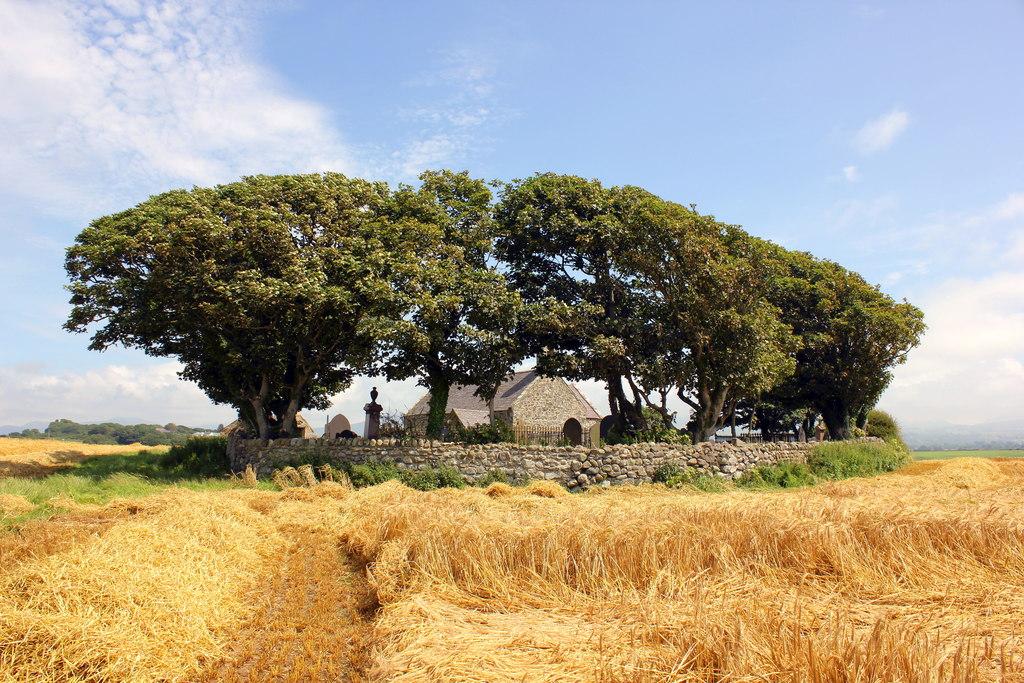Castle Square Presbyterian Church
Caernarfon, Gwynedd
Across the square from Caernarfon Castle, the church was opened in 1883 to hold English services in this very Welsh town.

St Baglan stands in splendid isolation in a wonderfully romantic position overlooking Caernarfon Bay reverberating with echoes of the renowned Mabinogion tales.
Llanfaglan, Gwynedd
The churchyard is well worth exploring. Its form suggests preChristian origins and there is unpretentious vernacular charm in the boundary wall, the entrance gate with the churchwardens inscription and the range of slate headstones and chest tombs, not forgetting the 'pirate grave', popular in local folklore.
In its earliest walling, the church dates from the 13th century but it took four more centuries to acquire its present configuration.
As you enter the church do look at the shelf and lintel of the eastern wall of the porch. Here you will find two cross slabs dating from the 14th century. Both stones are carved with crosses, but the lower slab also carries the image of a ship. On the inside, above the door, you’ll find an extremely early reused carved stone of the 5th or 6th century that has been reused as a lintel. This is inscribed with 'Fili Lovernii Anatemori' these are Latinised forms of the Brythonic names Lovernius and Anatemorus. In its correct upright position, it would read Anatemori Fili Lovernii.
The church interior is evocative of 18th century social life in the mixture of modest open back seating and the grander box pews for the wealthier villagers, including one from Ynys Môn (Anglesey), who as you will see often added their own date and signature.
Caernarfon, Gwynedd
Across the square from Caernarfon Castle, the church was opened in 1883 to hold English services in this very Welsh town.
Llanddwyn Island, Anglesey
Llanddwyn Island (Ynys Llanddwyn) is a magical place.
Llangadwaladr, Anglesey
Best known as the burial place of King Cadfan of Gwynedd, who died around 625 AD, shortly after the church was established.